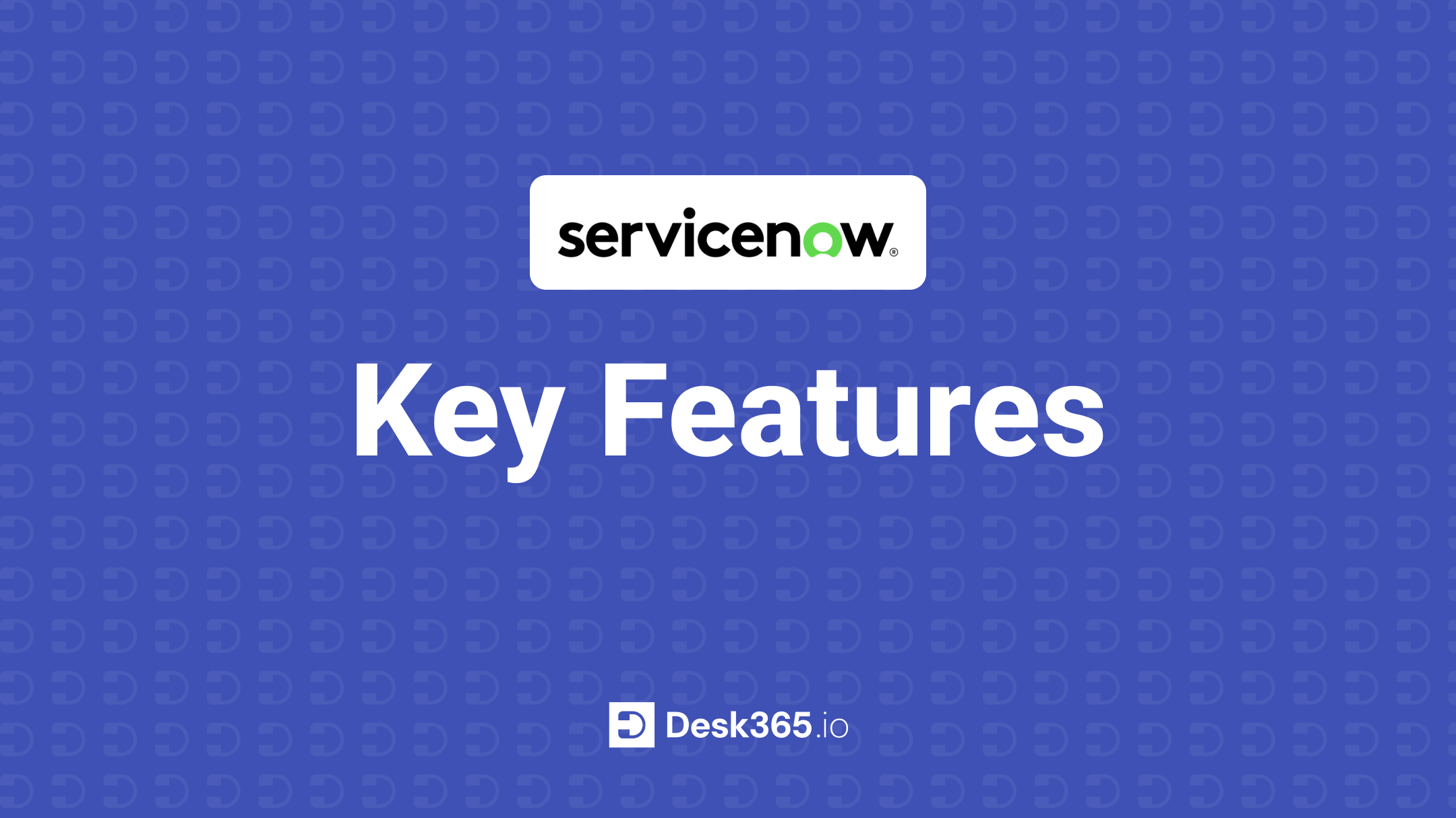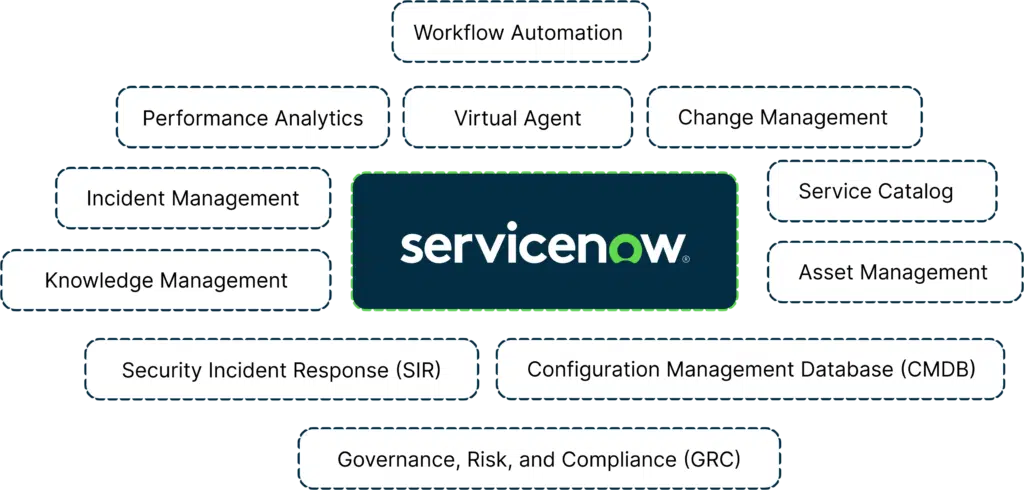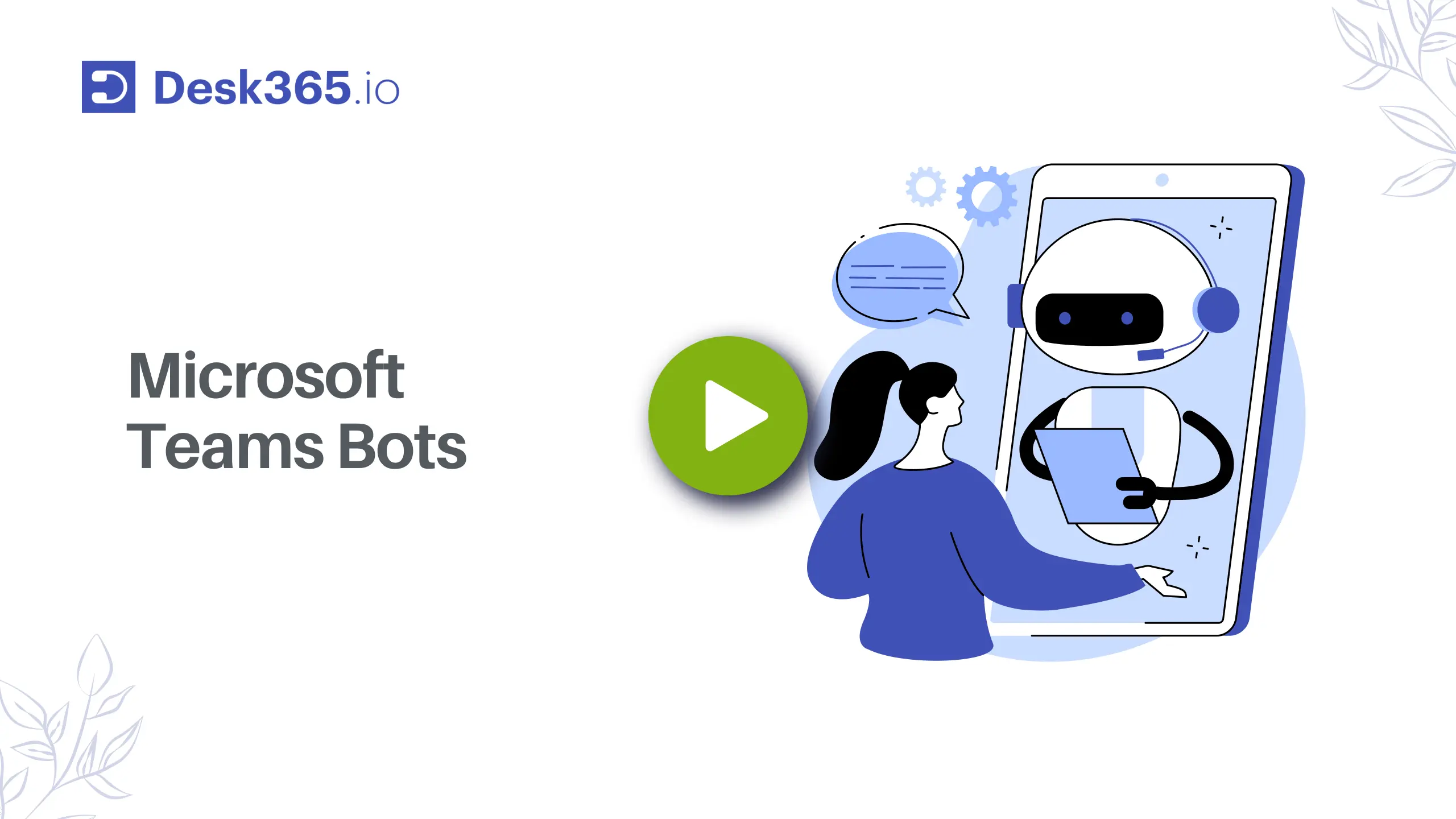Managing IT services efficiently is essential for keeping everything running smoothly. From tracking incidents and automating workflows to improving collaboration across teams, ServiceNow provides a comprehensive platform to handle it all.
With so many features available, it can be tough to know where to begin. In this post, we’ll dive into the key features of ServiceNow that can help you streamline processes, boost productivity, and transform the way your team manages IT operations. Whether you’re already using the platform or considering it, you’ll get a clear idea of how it can support your organization’s growth and efficiency.
1.
Incident management
ServiceNow’s incident management allows organizations to efficiently track, manage, and resolve IT incidents. It helps businesses minimize downtime and keep their services running smoothly by addressing issues as soon as they arise.
Pros
ServiceNow’s incident management is highly automated, making it easier to track incidents in real-time. The system integrates with other IT operations, ensuring seamless communication and a faster resolution process. It offers robust reporting capabilities and real-time status updates, ensuring that all stakeholders are informed.
Cons
Configuring incident management workflows can be complex and time-consuming. Additionally, while automation speeds up processes, the system can sometimes trigger excessive notifications, leading to alert fatigue among staff.
2.
Change management
Change management in ServiceNow enables organizations to plan, track, and implement changes to their IT environment without disrupting business operations.
Pros
ServiceNow’s change management offers a comprehensive approval process, allowing businesses to assess risk before making changes. It integrates with other ServiceNow modules to ensure that changes are well-documented and compliance is maintained. Automation helps streamline the approval process, reducing manual efforts and errors.
Cons
The approval process can be rigid, and the system may seem overly complex for smaller changes. In fast-paced environments, the process can seem slow due to the necessary formalities and layers of approval required.
3.
Service catalog
The service catalog in ServiceNow provides a centralized location where users can request services, such as software, hardware, or access to IT resources, improving the overall self-service experience.
Pros
A highly customizable service catalog makes it easy for users to request services and for IT teams to manage requests. It empowers employees by offering self-service options, which reduces the volume of simple requests handled by the support team.
Cons
The catalog can become cluttered as new services are added, making it harder to navigate. Additionally, the wide range of customization options can be overwhelming for organizations that don’t have dedicated resources to manage and optimize the catalog.
4.
Knowledge management
ServiceNow’s knowledge management feature stores valuable information that helps resolve issues quickly. It provides a centralized knowledge base accessible to both employees and customers, reducing the need for direct agent intervention.
Pros
The knowledge base is an excellent tool for promoting self-service and reducing the volume of incoming tickets. ServiceNow allows for the easy creation and categorization of articles, making it a great resource for both customers and support agents.
Cons
Maintaining a knowledge base can be challenging as it requires constant updates to remain relevant. Over time, it may become difficult to ensure the accuracy of older articles, which could result in outdated or incomplete information being provided to users.
5.
Asset management
ServiceNow’s asset management allows businesses to track and manage their IT assets, such as software, hardware, and network equipment, throughout their lifecycle.
Pros
Asset management helps businesses maintain an accurate inventory of their IT assets, ensuring compliance and reducing unneeded purchases. It integrates well with other modules like Incident and change management, ensuring that asset data is available when needed for IT operations.
Cons
The asset tracking process can be complex to set up initially, and maintaining asset data accuracy requires ongoing effort. Without proper management, organizations may face challenges in keeping their asset information up to date.
6.
Configuration Management Database (CMDB)
The CMDB stores critical data about IT assets (configuration items) and their relationships, helping teams understand how changes and incidents impact the larger IT environment.
Pros
A well-maintained CMDB offers a holistic view of the IT infrastructure, which can help in both incident and problem management. It also plays a critical role in minimizing downtime by identifying the root causes of issues faster and improving decision-making during incidents.
Cons
Maintaining the CMDB requires significant effort. Keeping the database up to date can be a challenge, particularly in large organizations with frequent changes in their IT environment. Without proper management, the CMDB may become outdated or inaccurate, reducing its usefulness.
7.
Virtual agent
ServiceNow’s virtual agent is an AI-powered chatbot that automates self-service tasks, helping users solve common issues without human intervention.
Pros
The virtual agent enhances the user experience by handling repetitive tasks like password resets and basic troubleshooting, which frees up support teams for more complex issues. It can also integrate with other ServiceNow modules, creating a seamless service experience.
Cons
While the virtual agent can handle simple tasks, it’s not always able to resolve more complex issues. Its responses may be basic, and users may require manual intervention for more specific or nuanced queries that go beyond the bot’s capabilities.
8.
Performance Analytics
Performance analytics provides real-time insights into key performance indicators (KPIs), allowing businesses to monitor and improve service performance.
Pros
Performance analytics helps organizations identify trends, track service metrics, and spot potential areas for improvement. It offers highly customizable dashboards, which allows stakeholders to monitor and react to real-time data effectively.
Cons
Configuring performance dashboards can be time-consuming and complex, especially for users who are not familiar with data analytics. Additionally, while the tool offers powerful insights, the learning curve for maximizing its full potential can be steep for new users.
9.
Security Incident Response (SIR)
The Security Incident Response (SIR) module helps manage and respond to security threats, integrating seamlessly with other ITSM functions to prioritize and resolve security issues in real-time.
Pros
SIR allows for quick action in response to security incidents, reducing the potential impact of breaches. It integrates with other security tools to automate workflows, ensuring that security teams are always prepared and aligned in their response efforts.
Cons
The SIR module can be overwhelming for smaller teams or organizations with fewer dedicated security resources. Additionally, the complexity of setup and configuration may present challenges for businesses without experienced security staff.
10.
Workflow automation
ServiceNow’s automation engine helps organizations automate repetitive tasks, workflows, and processes across IT, HR, customer service, and more. By using powerful automation tools, businesses can reduce manual effort and streamline their service management operations.
Pros
The automation engine in ServiceNow allows for the seamless automation of both simple and complex workflows, reducing human error and improving efficiency. It integrates with various systems and tools, allowing for cross-departmental automation, and helps ensure consistency in service delivery.
Cons
Setting up complex automation workflows can be time-consuming and may require technical expertise to configure properly. Additionally, while automation speeds up operations, improper configuration can lead to issues that require manual intervention, which could potentially disrupt services if not handled correctly.
11.
Governance, Risk, and Compliance (GRC)
The Governance, Risk, and Compliance (GRC) module in ServiceNow helps organizations manage risk, ensure compliance with regulations, and improve overall governance practices. It provides a unified platform for assessing risks and managing audits, ensuring that the organization meets industry standards and regulations.
Pros
ServiceNow’s GRC module helps businesses automate and centralize their risk and compliance activities, offering real-time monitoring and reporting. It ensures that all regulatory requirements are met, reducing the risk of non-compliance and associated penalties. It also allows organizations to proactively identify and mitigate potential risks.
Cons
The complexity of setting up and managing GRC workflows can be a barrier for smaller organizations or those without dedicated compliance teams. The system can sometimes feel cumbersome for businesses that need more flexibility or have a dynamic, rapidly changing risk landscape. Additionally, maintaining accurate and up-to-date compliance data requires ongoing attention and resources.
However, as a Reddit user perfectly put it: “Using ServiceNow for 10 people is like using a surface-to-air missile to kill a squirrel in your backyard.” This analogy highlights a crucial point—ServiceNow’s vast array of features and capabilities can be an overkill for small businesses or teams with simpler needs. While it excels at managing complex workflows across large teams, many businesses don’t need the full range of features or the level of complexity that ServiceNow offers.
ServiceNow vs. Desk365: Which ITSM solution fits your business?
| Feature | ServiceNow | Desk365 |
|---|---|---|
| Incident Management | Comprehensive incident management with automation, real-time tracking, and integration across IT ops. | Fully-featured ticketing system that tracks and automates incident handling and support requests. |
| Change/Approval Management | Advanced change management, including risk assessment, approval workflows, and full lifecycle control. | Automated change/approval workflows with sequential and non-sequential options, role-based permissions, and approval tracking. |
| Knowledge Management | Extensive knowledge base with articles, solutions, and best practices for both customers and agents. | Includes a knowledge base module where FAQs and solutions can be stored and accessed by users and agents. |
| Performance Analytics | Real-time, customizable performance dashboards and KPI tracking for deep insights and trend analysis. | Includes fundamental reporting and analytics dashboards for ticket metrics and customer support KPIs. |
| AI Agent | AI-powered virtual agent to automate tasks, guide users through self-service, and resolve incidents. | AI Agent that generates quick, contextual replies based on historical ticket data and knowledge base articles, with multilingual support. |
| Workflow Automation | Automates complex workflows across multiple departments, including ticket routing, escalations, and approvals. | Offers automation for ticket routing, escalation, approvals, and basic workflows, suitable for small-to-medium business needs. |
| Customer Satisfaction (CSAT) | Advanced CSAT surveys to measure customer satisfaction and identify service improvement areas. | Includes CSAT surveys to collect feedback after support interactions, offering essential insights. |
If you’re running a large organization with complex IT needs, ServiceNow is likely the right choice. It’s packed with advanced features like asset management, change management, incident management, performance analytics, and workflow automation that can help large teams streamline operations, track incidents, and manage changes on a grand scale. These capabilities make it a go-to platform for big enterprises where efficiency and customization are crucial. However, ServiceNow’s comprehensive features and customization options come at a price, and it might be a bit much for smaller businesses or teams with tighter budgets.
On the flip side, Desk365 is a perfect fit for small to medium-sized businesses that need solid IT service management without the steep learning curve or high cost. It covers all the essentials, like approval management, knowledge management, and workflow automation, everything you need to keep customer support running smoothly. It’s user-friendly, intuitive, and doesn’t come with the overwhelming complexity or the hefty price tag that comes with enterprise solutions like ServiceNow.
This makes Desk365 a great option for businesses that want a cost-effective, easy-to-use platform to optimize their support operations without breaking the bank.
So, if you’re in a large enterprise needing all the bells and whistles, ServiceNow is your best bet. But if you’re part of a small to mid-sized business looking for an affordable, straightforward solution to ServieNow, Desk365 is a fantastic choice that delivers just what you need without the extra cost or complexity.
Also, read more about ServiceNow Pricing and see how Desk365 is ideal for businesses that need a cost-effective, user-friendly solution with advanced automation, easy onboarding, and comprehensive support at a lower entry cost.
Omni-Channel
- Microsoft Teams Ticketing
- Email Ticketing
- Customer Support Portal
- Web Form/Web Widget
- Unified Inbox
Process Automation
- Workflow Automation
- Multiple Business Hours
- Custom Response Templates
- Canned Responses
- Tasks/To-do Lists
- 'Share To' Tickets
- Time Tracking
- SLA Management & Business Hours
- SLA Reminders & Escalations
- Multiple SLAs
- SLAs in Automations
Ticket Management
- Change/Approval Management
- Round Robin Ticket Assignments
- Load Based Ticket Assignments
- Ticket Watchers
- Multiple Groups/Departments
- Draft with AI
- AI Agent
- Collision Detection
- Closure Rules
- Knowledge Base
Data & Analytics
- Customer Surveys & Reports
- Ticket Trend Reports
- Productivity/SLA Reports
- Export Data
- Scheduled Reports
- Import Data
Customization
- Custom Email Servers
- Custom Domain
- Custom Ticket Fields
- Custom Forms
- Custom Roles
- Custom Reports & Graphs
- Remove Desk365 Branding
Integrations
- Entra ID Single Sign-on
- Microsoft Entra ID Sync
- API Access
- Web-hooks
- Power Automate Connector
- Microsoft 365 Copilot Plugin
Support
- Free Setup and Installation
- Priority Support
Switch to a better Ticketing System now!
ServiceNow can be pretty expensive, especially for smaller businesses or organizations with tighter budgets. While it offers a ton of features and is a powerful platform, the costs can add up quickly when you factor in subscriptions, implementation, and ongoing support.
If you’re looking for a more affordable option, Desk365 might be a game-changer. By switching to Desk365, you could save up to 87% on costs compared to ServiceNow. Desk365 starts at just $12 per user per month and provides many of the essential features you’d need, like AI-powered ticketing, automation, and seamless integrations with tools like Microsoft Teams—all without the heavy price tag or the complex setup process that comes with ServiceNow.
Frequently asked questions
The three main parts of ServiceNow are:
IT Service Management (ITSM) – This is the core offering of ServiceNow, designed to automate and streamline IT services and processes. It includes modules for incident management, problem management, change management, service catalog, and request management.
IT Operations Management (ITOM) – ITOM focuses on managing infrastructure and operations, ensuring that IT services run efficiently. It includes features for event management, discovery, orchestration, and cloud management.
IT Business Management (ITBM) – ITBM provides tools to align IT with business objectives. It includes modules for project and portfolio management, financial management, and demand management to ensure IT resources are used effectively in supporting business goals.
The four pillars of ServiceNow are:
Platform – ServiceNow’s platform is the foundation, offering a cloud-based, scalable infrastructure with robust tools for building and customizing applications, automating workflows, and integrating with other systems.
Automation – This pillar emphasizes the automation of processes across various departments, enabling organizations to streamline workflows, reduce manual tasks, and improve efficiency using tools like workflows, orchestration, and robotic process automation (RPA).
Intelligence – ServiceNow integrates AI and machine learning to provide insights, predictive analytics, and smart decision-making. This helps organizations improve decision-making, automate tasks, and optimize service delivery.
Experience – This pillar focuses on delivering an intuitive and user-friendly experience. Whether it’s through personalized user interfaces, self-service portals, or mobile access, ServiceNow aims to create seamless and engaging experiences for end-users, IT teams, and business leaders.






